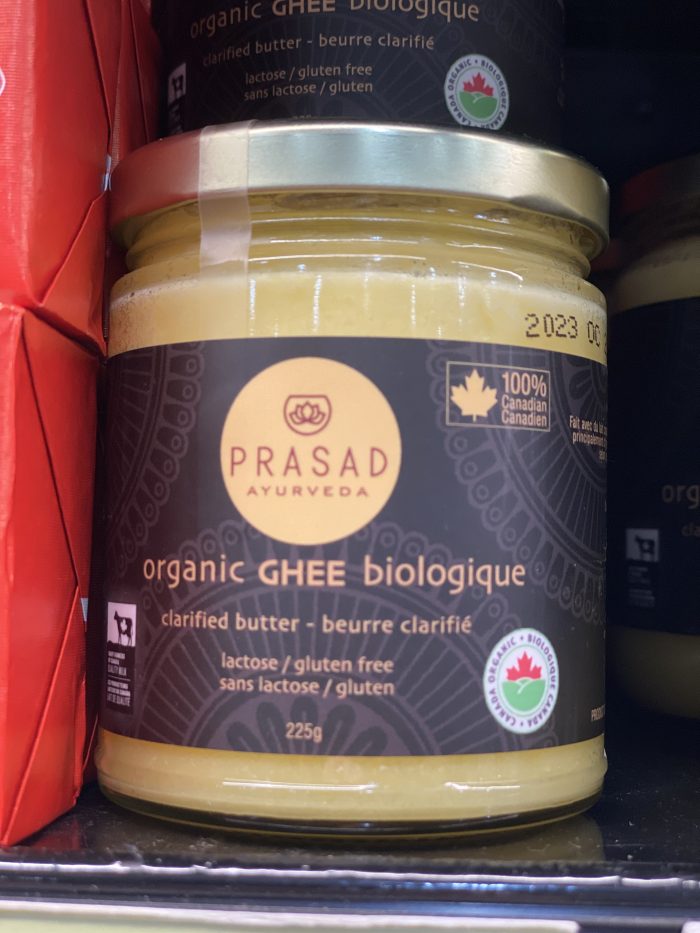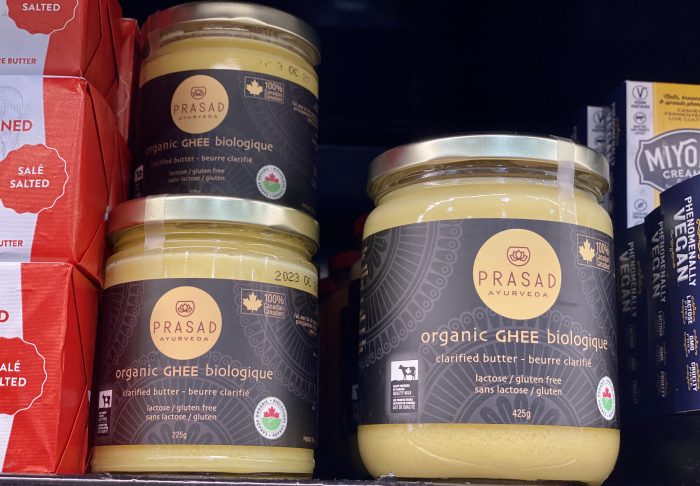What is Ghee? What is The Difference Between Ghee and Butter?

Ghee, pronounced GEE with a hard G (means fat in Hindi), is clarified butter that is used a lot in France, India, Pakistan and Asia. It is made from simmered and strained butter. Cooks love using ghee because of its sweet flavor, high smoke point and nutty flavor. It is used just like other oils. Ghee adds flavor to sautéed or fried foods.
There are also other benefits to using ghee. For centuries, it has been used in Ayurvedic massage and as a base for herbal ointments to treat burns and rashes. Because it contains butyric acid (a short-chain fatty acid), ghee helps with digestion and gastrointestinal tract issues. There is also less lactose in ghee than in butter, so it is usually more suitable for the dairy-sensitive diet. Ghee is nutrient-dense and contains vitamins A and K2.

Ghee can be pricey. The reason is the process. Butter contains 20% water, which is removed through evaporation while the butter is simmering. The milk solids (curds) are then drained away. Only the remaining strained butter becomes ghee. Do you know you can make your own and it is pretty easy? Follow this easy recipe here.

Bottom line, ghee is better than butter if you are lactose and casein intolerant. Perhaps, ghee has a higher concentration of fat than butter and has more calories. It is like everything else; to keep it safe for your health and to reduce your risk of heart disease, use ghee with moderation.
If you are interested in getting recipes using ghee, click on this link.
